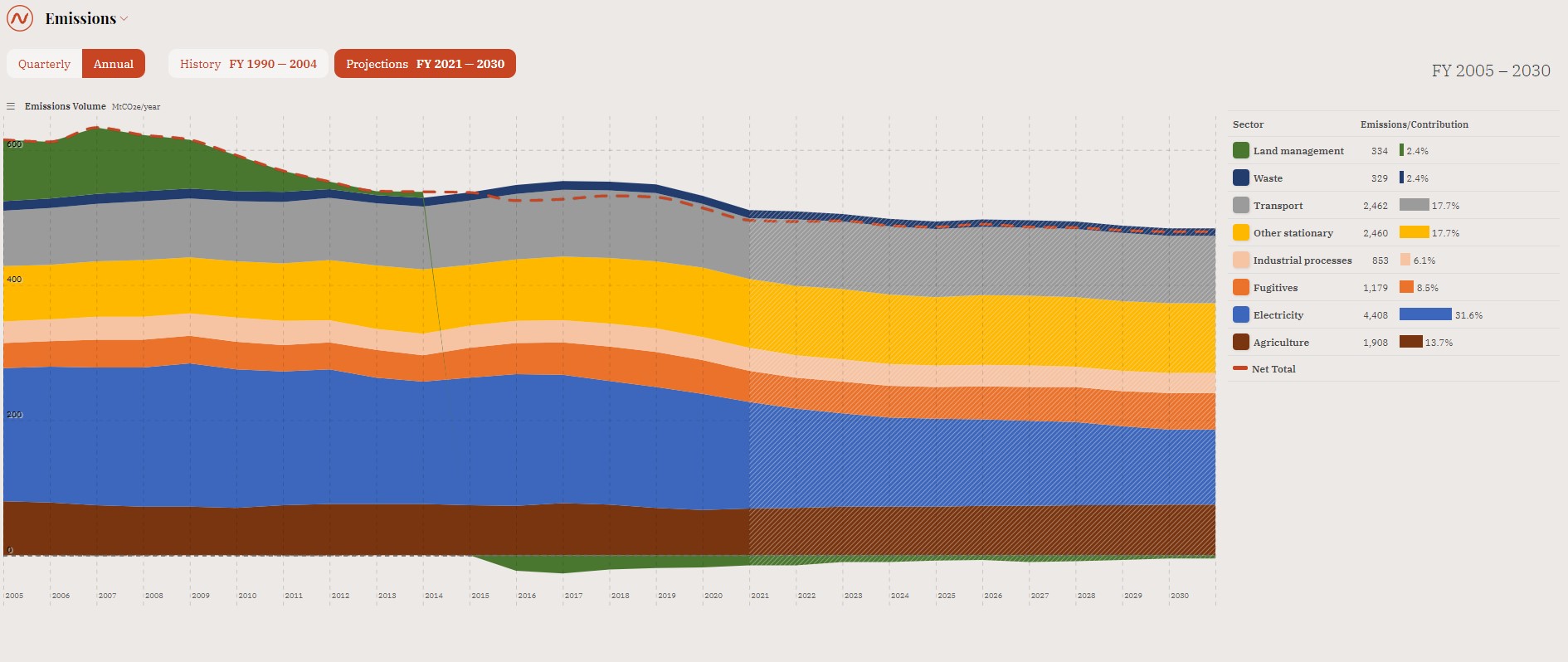With COP26, the global conference to achieve action on climate change, starting tomorrow, I’ve taken a quick look at the data (as opposed to the rhetoric) on Australia’s current progress on carbon emissions. Two great graphs recently caught my eye.
First, Simon Holmes a Court has built a website – here – showing the path of all carbon emissions in Australia since 2005. It shows that while Australia has reduced emissions between 2005 and 2021 (by just over 20%), the main reason has been the reduction in land clearing. If you exclude land clearing, Australia’s emissions have reduced by a total (not an annualised number) of 2.9% since 2005.
Once you’ve stopped clearing land, you can’t stop again, so reducing emissions requires some more substantial changes. Our current projection for the rest of the period to 2030 looks pretty flat, with electricity emissions continuing to decline, but increases in fugitive emissions and everything else staying pretty stable.
And my second graph comes from this excellent comprehensive report from the Climate Council. If you look at net fossil fuel exports by country it becomes clear that Australia, as well as its own emissions inside the country that are in the graph above, is making an outsize contribution to worldwide carbon emissions.
When we talk about Australian emissions in the Australian political landscape, export emissions like these are generally not included. In company accounting, these emissions (by someone else you sell your product to) are generally described as Scope 3 emissions :
Greenhouse gas emissions are categorised into three groups or ‘Scopes’ … Scope 1 covers direct emissions from owned or controlled sources. Scope 2 covers indirect emissions from the generation of purchased electricity, steam, heating and cooling consumed by the reporting company. Scope 3 includes all other indirect emissions that occur in a company’s value chain.
Australia’s “scope 3” carbon emissions are substantially more than the emissions that happen in Australia. This ABC article concludes that carbon emissions from Australia’s fossil fuel exports are at least double Australia’s local carbon emissions, which isn’t surprising when you look at the graph above.
Finally, a bit of beauty – this waratah I found recently is local to the south east coast of Australia, and flowers in September and October (at least at our current climate settings).




Seems like Australia could do more for the climate by increasing the royalties on coal than almost anything else. Not to say we couldn’t do other things but at least royalties are controlled by the states instead of the federal government.
My comment is not for the serious part, but for the bit of beauty.
Living on Bilgola Plateau, we had 2 Waratah bushes, not bought from a nursery. One year we had 14 flowers on one bush (showing off rather). The other one had 3 flowers.
Pittwater Council used to send someone to collect the seeds.
Love